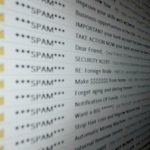Ransomware is a type of malicious software designed to deny access to a computer system or its data, typically by encrypting files, until a ransom is paid to the attacker. This form of malware has become increasingly prevalent due to its potential for high financial gain and its effectiveness at exploiting user vulnerabilities. Ransomware attacks can disrupt personal, business, and governmental operations, making them a serious threat in today’s digital landscape.
Overview of Pomoch Ransomware
One such ransomware variant is Pomoch. Like other ransomware, Pomoch seeks to extort money from victims by rendering their files inaccessible. Once Pomoch infiltrates a system, it begins its attack by encrypting various files, making them unreadable without a decryption key, which is held hostage by the attackers. Pomoch typically targets files with common extensions such as .docx, .xlsx, and .jpg, renaming them with the .pomoch extension after encryption.
Infection and Functionality
Pomoch ransomware usually gains access to systems through phishing emails, malicious attachments, or software vulnerabilities. Once the malware is installed, it executes a series of actions to ensure its effectiveness. It will:
- Encrypt Files: Pomoch scans the infected system and encrypts files using a robust encryption algorithm. Each encrypted file is appended with the .pomoch extension, making it impossible to open without the decryption key.
- Drop Ransom Note: After encryption, Pomoch drops a ransom note on the infected system. This note, often named “README.txt” or similar, contains instructions on how to pay the ransom and recover the files.
Ransom Note and Ransom Demand
The ransom note left by Pomoch typically demands payment in cryptocurrency, like Bitcoin, to ensure anonymity. The note will instruct the victim to contact the attackers through a specific email address or a dark web site. It often includes a deadline for payment and threats of permanent data loss if the ransom is not paid in time. The ransom demand can vary but is generally set at a sum high enough to incentivize payment while maintaining the attackers’ anonymity.
Text presented in this message:
YOUR PERSONAL ID:
–
/!\ YOUR COMPANY NETWORK HAS BEEN PENETRATED /!\
All your important files have been encrypted!
Your files are safe! Only modified. (RSA+AES)
ANY ATTEMPT TO RESTORE YOUR FILES WITH THIRD-PARTY SOFTWARE
WILL PERMANENTLY CORRUPT IT.
DO NOT MODIFY ENCRYPTED FILES.
DO NOT RENAME ENCRYPTED FILES.
No software available on internet can help you. We are the only ones able to
solve your problem.
We gathered highly confidential/personal data. These data are currently stored on
a private server. This server will be immediately destroyed after your payment.
If you decide to not pay, we will release your data to public or re-seller.
So you can expect your data to be publicly available in the near future..
We only seek money and our goal is not to damage your reputation or prevent
your business from running.
You will can send us 2-3 non-important files and we will decrypt it for free
to prove we are able to give your files back.
Contact us for price and get decryption software.
email:
pomocit01@kanzensei.top
pomocit01@surakshaguardian.com
* To contact us, create a new free email account on the site: protonmail.com
IF YOU DON’T CONTACT US WITHIN 72 HOURS, PRICE WILL BE HIGHER.
* Tor-chat to always be in touch:
qd7pcafncosqfqu3ha6fcx4h6sr7tzwagzpcdcnytiw3b6varaeqv5yd.onion
Purpose and Threat
The primary purpose of Pomoch ransomware is financial gain. By encrypting files and demanding payment, the attackers leverage the victim’s dependency on their data to extract money. This threat poses significant risks to both individuals and organizations, including data loss, financial cost, and potential operational disruption. Ransomware attacks can have severe implications, especially if critical files or systems are affected.
Symptoms of Infection
Symptoms that indicate a Pomoch ransomware infection include:
- Inaccessible Files: Files on the system are encrypted and have the .pomoch extension.
- Ransom Note: A ransom note file appears on the system, providing instructions for payment.
- System Slowdown: The infected system may experience slower performance due to the encryption process.
- Error Messages: Attempts to open encrypted files may result in error messages indicating that the file is corrupted or inaccessible.
Detection Names
To identify Pomoch ransomware, you can use the following detection names:
- Pomoch
- Ransom.Pomoch
- Win32/Pomoch
- Trojan.Ransom.Pomoch
Similar Threats
Pomoch ransomware is similar to other ransomware variants such as:
- Locky
- Cerber
- WannaCry
- CryptoLocker
These threats also employ encryption to lock files and demand ransom payments for decryption keys.
Removal Guide
- Boot into Safe Mode:
- Restart your computer and press F8 (or Shift+F8 for newer systems) before Windows loads.
- Select “Safe Mode with Networking” from the boot options.
- Disconnect from the Internet: To prevent further communication with the ransomware servers, disconnect your computer from the internet.
- Remove Malicious Files: Use SpyHunter to scan and remove Pomoch ransomware. Download SpyHunter, install it, and perform a full system scan to detect and remove Pomoch and related malware.
- Restore Files from Backup: If you have backups of your files, restore them after the ransomware has been removed. Ensure backups are free of malware.
- Change Passwords: Change passwords for all accounts, especially if you used the same password on any sites that were accessed from the infected computer.
- Update Software: Ensure that your operating system and all software are up to date to protect against vulnerabilities exploited by ransomware.
Preventive Measures
To prevent future ransomware infections:
- Use Reliable Security Software: Install and regularly update a reputable anti-malware solution.
- Avoid Suspicious Emails: Do not open attachments or click on links from unknown or untrusted sources.
- Regular Backups: Maintain regular backups of important files and store them offline or in a secure cloud service.
- Keep Systems Updated: Regularly update your operating system and applications to patch security vulnerabilities.
Conclusion
Pomoch ransomware represents a serious threat to data security and system integrity. By understanding its behavior, recognizing symptoms, and following a detailed removal process, you can mitigate the damage and recover from an attack. For enhanced protection and to scan your system for free, consider downloading SpyHunter.





